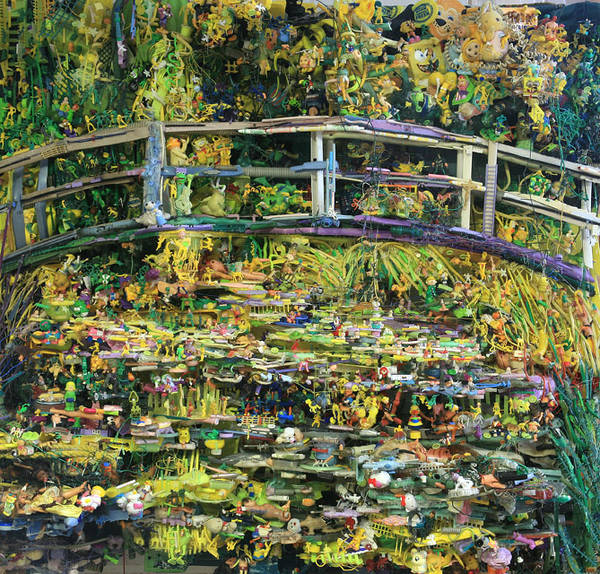

[ About Re:Sound Bottle -second mix- ]
Experimental sound medium that transforms recorded everyday sounds into music
[ Concept ]
• Allows anyone to create music using sounds from daily life
• Communication that arises from intuitive sound interaction
The conventional way of experiencing music is usually through existing technologies such as the ipod or the radio. However, this style of experiencing music takes place in a given form; is static and as a result leaves us dissatisfied.
To really enjoy music, we need to find music through sounds around us. We need to stop being tied down with new gadgets that provide the music for us, but to search for music ourselves.
A series of ideas like these lead me to create this device.
This creation's main concept is to record sounds from daily life. It is the concept of ‘collecting sounds in a bottle’. You choose the sounds collected in the bottle. Using everyday sounds as a musical component establishes a new understanding of the sounds we listen to everyday. By collecting your own sampling of sounds, you encounter a unique piece of music that can be experienced only once.
This device will bring a smile to anyone, as many will be able to experience the charm of music, leading them to turn music into something they love and adore.
Created by Jun Fujiwara
Zimoun
Sound Architectures, Sculptures & Installations
Compilation Video V.3.1 / June 02, 2013
Using simple and functional components, Zimoun builds architecturally-minded platforms of sound. Exploring mechanical rhythm and flow in prepared systems, his installations incorporate commonplace industrial objects. In an obsessive display of simple and functional materials, these works articulate a tension between the orderly patterns of Modernism and the chaotic forces of life. Carrying an emotional depth, the acoustic hum of natural phenomena in Zimoun's minimalist constructions effortlessly reverberates.
http://www.nearfield.org/2009/10/immaterials-the-ghost-in-the-field
This video is about exploring the spatial qualities of RFID, visualised through an RFID probe, long exposure photography and animation. It features Timo Arnall of the Touch project and Jack Schulze of BERG. The problem and opportunity of invisibility RFID is still badly understood as an interactive technology. Many aspects of RFID interaction are fundamentally invisible; as users we experience two objects communicating through the ‘magic’ of radio waves. This invisibility is also key to the controversial aspects of RFID technology; once RFID antennas are hidden inside products or in environments, they can be invoked or initiated without explicit knowledge or permission. (See here for more on the invisibility of radio.) But invisibility also offers opportunities: the lack of touch is an enormous usability and efficiency leap for many systems we interact with everyday (hence the success of Oyster, Suica and Octopus cards). But there is also the ‘magic’ of nearness one of the most compelling experiential aspects of RFID. As designers we took this invisibility as a challenge. We needed to know more about the way that RFID technology inhabits space so that we could better understand the kinds of interactions that can be built with it and the ways it can be used effectively and playfully inside physical products.
A floating orb that explores and manipulates transitional public spaces with particular acoustic properties. By recording and replaying these ambient sounds, the hovering sphere produces a delayed echo of human activity.
Electronics were programmed and inserted into the sphere in order to record and replay the surrounding sounds. Find out more: bit.ly/1cjvquk
A collaboration between Julinka Ebhardt, Francesco Tacchini and Will Yates-Johnson from the Royal College of Art.
Ideas and practices for regularly gathering sources of inspiration, eliminating blocks to more easily access creative states, prolong them, and leverage their power to develop and execute great work.
http://www.slideshare.net/denisejacobs/the-art-of-disciplined-creativity-9915414
Denise Jacobs - Creativity habit links : https://delicious.com/denisejacobs/creativityhabit
The "Water Light Graffiti" is a surface made of thousands of LED illuminated by the contact of water. You can use a paintbrush, a water atomizer, your fingers or anything damp to sketch a brightness message or just to draw. Water Light Graffiti is a wall for ephemeral messages in the urban space without deterioration. A wall to communicate and share magically in the city. Water Light Graffiti is a project of Antonin Fourneau (atocorp.free.fr/)
Bret Victor invents tools that enable people to understand and create. He has designed experimental UI concepts at Apple, interactive data graphics for Al Gore, and musical instruments at Alesis.
For more on Bret, see worrydream.com.
This talk was given at CUSEC 2012 (2012.cusec.net).
After his older brother Victor died in Berlin, Cristian (17) decides to make a documentary about his family and his brother's best friends. How do they feel? How do they deal with the death of someone so close to them?
Inspired by the home videos I made since the late eighties, in this, my first feature film and/or mockumentary, I 'kill' myself to interview my family and my best friends from Chile and Germany, exploring the acting skills of non actors and the line between fiction and documentary.
The digital revolution of the last decade has unleashed creativity and talent in an unprecedented way, with unlimited opportunities.
But does democratized culture mean better art or is true talent instead drowned out? This is the question addressed by PressPausePlay, a documentary film containing interviews with some of the world's most influential creators of the digital era. presspauseplay.com @presspauseplay Facebook: on.fb.me/y4gEK1
Tom Deininger is an assemblage artist who arranges bewilderingly large collections of odd plastic tchotchkes into gorgeous pieces, including this Monet-like masterpiece.
http://boingboing.net/2011/10/21/fine-art-recreated-with-plastic-tchotchke-assemblages.html
"touched echo" is a minimal medial intervention in public space. The visitors of the Bruhl's Terrace (Dresden, Germany) are taken back in time to the night of the terrible air raid on 13th February 1945. In their role as a performer they put themselve